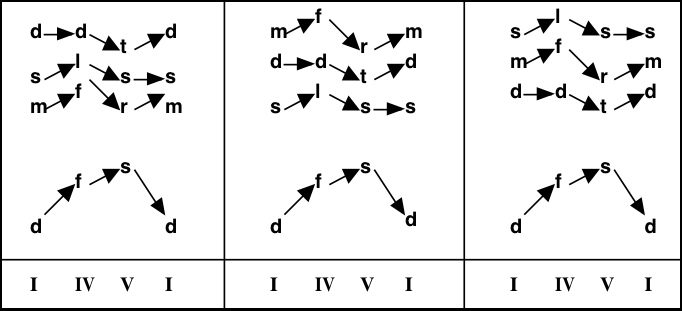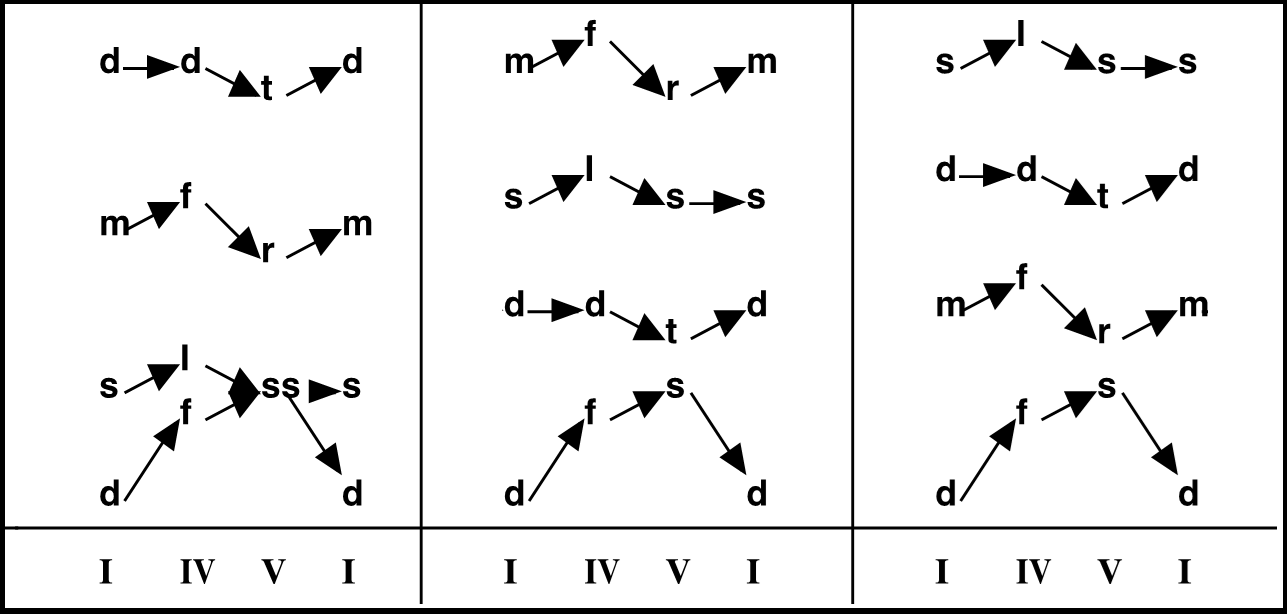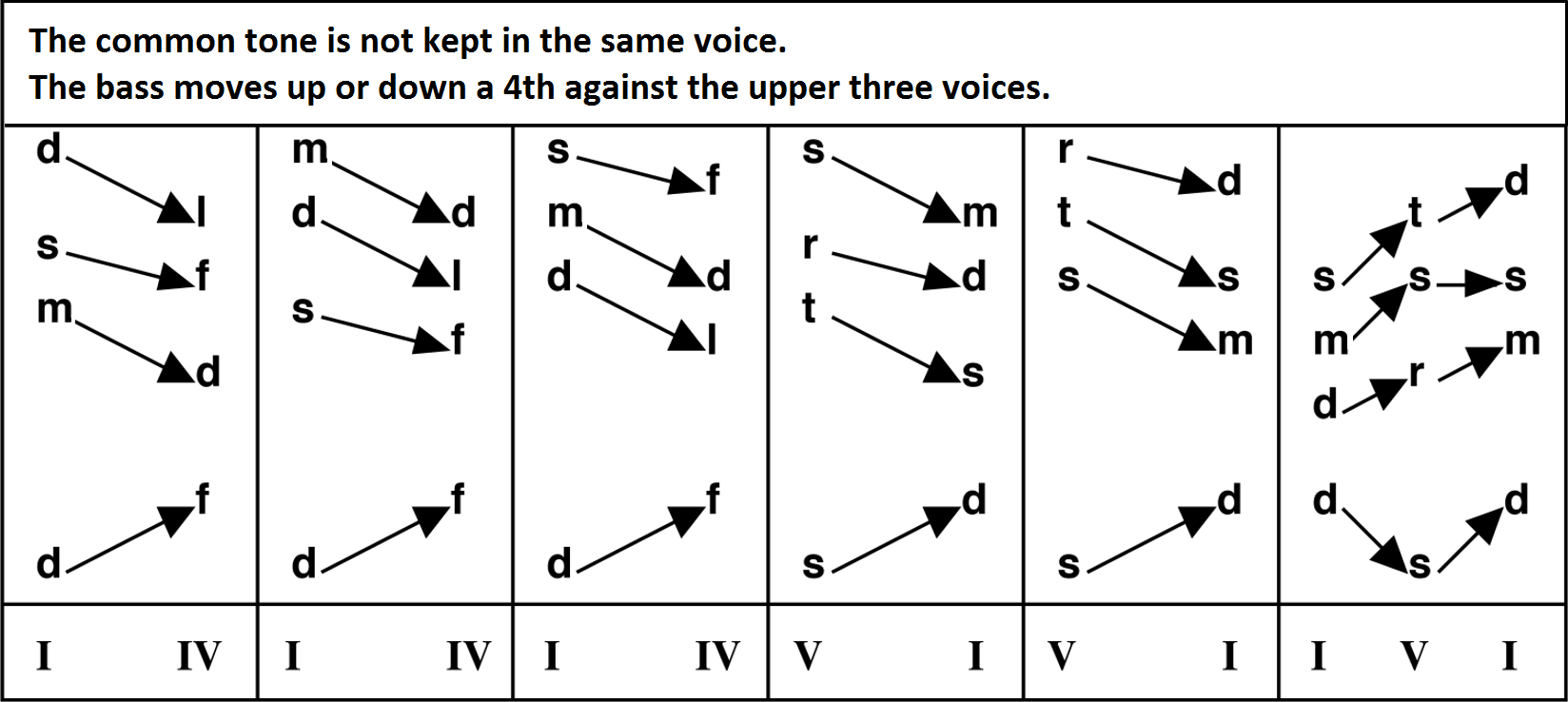2 Connecting Primary Triads in Root Position
In major keys:
- The tonic triad (I) may move either to the subdominant triad (I – IV) or dominant triad (I – V).
- The dominant triad (V) has a tendency to resolve to the tonic (V – I).
- The subdominant triad (IV) bridges the motion from tonic to dominant to create the I – IV – V progression.
- The dominant triad (V) moving to the subdominant triad (V – IV) is weak and used less frequently.
The same progressions work in minor keys with the raised leading tone of the dominant chord (V![]() ).
).
Primary triad connection possibilities:
| I – V (major) i – V |
I – IV (major) i – iv (minor) |
IV – V (major) iv – V |
| V – I (major) V |
IV – I (major) iv – i (minor) |
Infrequent: V – IV (major) V |
Common Tone Connection between I-V and I-IV
Contrary Motion between IV-V
A. Common tone connection
One common tone exists between I – IV and I – V. In common tone connection, move the bass to the root of the next chord, keep the common tone in the same voice (for example, if the common tone is in the alto it stays in the alto; if in the soprano, it stays in the soprano), and move the other two upper voices to the nearest chord tones of the next chord. Make sure to have two roots, a third, and a fifth in both chords.
B. Contrary motion
No common tone exists between IV – V. When moving from IV – V, the top three voices move in contrary motion against the ascending stepwise movement of the bass (fa – so) to avoid parallel P5ths and P8ves (see “Common Mistakes in Voice Leading” below).
Voice Leading
The solfège diagrams below indicate the possible voice leading for each of the four voices (SATB). The diagrams can be converted into minor by replacing mi with me and la with le.
For each example:
- Sing the individual voices along with the playback, using solfège syllables.
- Sing the individual voices without the playback. Transpose into several other keys.

The solfège diagrams above are realized below in keyboard style, both in major and harmonic minor.
The same progressions in open spacing:

Minimal motion in each voice occurs by maintaining the same spacing (either open or close) throughout a progression.
Non-Common Tone Connection
between I-IV and i-V
In addition to common tone connection between I – IV and I – V, it is also possible to connect these chords without keeping the common tone.
Non-common tone connection requires contrary movement between the top three voices and the bass. If the bass moves up, the top three voices will move down to the nearest chord tones. If the bass moves down, the top three voices will move up to the nearest chord tones.
Compare the bass movement of IV – V, where contrary motion is required and the bass moves up by step to avoid parallels, to the non-common tone connections of I – IV and I – V, where the bass can move up or down by 4ths or 5ths against the upper three voices.
Melodic possibilities created by non-common tone connection between I-IV and I-V (and vice versa):
V – I : s–m, r–d, s–d’
I – IV : d’–l, s–f, m–d
voice leading
The solfège diagrams above are realized below in keyboard style, both in major and harmonic minor.
Common Mistakes in Voice Leading
- When two voices a P8 apart move in the same direction to another P8, it creates parallel octaves. Parallel octaves result in one or two of the four voices losing their independence, so they are avoided.
- When two voices a P5 apart move in the same direction to another P5, it creates parallel fifths. Parallel P5ths sound similar to parallel P8ves and are avoided.
- Bringing one voice in contrary motion may not solve the parallel 5ths or parallel 8ves. Avoid large skips in the bass such as dropping down a m7 (fa – so,).
